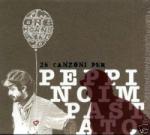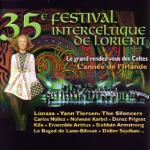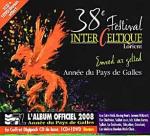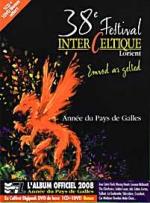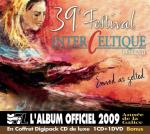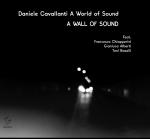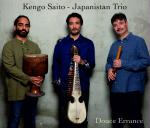

RUMANIA
JEAN MOSCOPOL (1903-1983)
Jean Moscopol is a wonderful example of an attractive and cosmopolitan bon vivant. He spoke Rumanian, Greek, French, English, German and Italian fluently. His voice was both flattering yet bursting with hidden meaning, and woman threw themselves at his feet. The elegance of tango music, together with its hidden erotic, suited him exactly and he always appeared on stage in tails. By 1936 his repertoire included 300 sensuous and exotic songs of all the well-known composers. His style had elements in common with his French contemporaries Maurice Chevalier, Charles Trenet and Tino Rossi. The composer Henry Malineanu, who wrote many songs for him, praised him with the following words: "Jean Moscopol in addition to his enormous talent, is intelligent and has both taste and refinement."
Moscopol, whose family originally came from Greece, was born in Braila, a port on the river Donau. His first ambition was to study law and literature, but after working in an office for a short while he decided, at the age of 26, to become a singer. After an "intermezzo" in Bucharest, where he made his debut on the radio and played minor roles in theatre and film, he moved to Berlin and studied classical singing with Professor Korst. At this time he also sang in nightclubs, sophisticated bars and in two German films produced by the famous UFA studios in Berlin. Back in Bucharest, the "Paris of the East", his rise to fame and fortune began. Up to the end of the Second World War he was performing at the most glamorous addresses, whether nightclubs or restaurants, in the Rumanian capital.
In 1945 however, with the beginning of the post-war totalitarian regime in Rumanian, his fortune was to turn. Seeking refuge in the USA, he had no choice but to earn his living as the night porter of a New York hotel. Any money he had over he invested in a small musical ensemble that he founded. Its repertoire consisted of some of the tangos and romances he new from the past, together with new songs about life in exile, many of which condemned the rise of communism. However he never regained his former fame and is thought to have died in obscurity in Los Angeles at the age of 80.
TITI BOTEZ (1901-1957)
Between 1930 and 1945, the golden years of Tango in Rumania, Titi Botez was one of the most popular singers. Because of his emotional style and warm vibrant voice he was dubbed "the eternal lover". He appeared with all the major figures of the eastern and mid-European entertainment scene, releasing records in Bucharest, Berlin, Vienna and Budapest. He also appeared in a number of Rumanian films. His greatest successes were with songs composed by Petre Andreescu.
TURKEY
For many Turkish musicians, the Tango was their first contact with "western" music. As in most of the metropoles of Europe the Tango was to become the dominant form of music in the nightclubs and dance venues of Istanbul in the late 20s and the 30s after that. At the time the cosmopolitan glamour of Istanbul was attracting sophisticated people form all over the globe. With the enthusiastic support of both Armenian and Jewish musicians a Tango scene established itself in the form of a uniquely Turkish Tango tradition.
SEYYAN HANIM (1913-1989)
In the Ottoman Empire the public appearance of Muslim Turkish women was unthinkable. Actresses and singers were invariably Jewish, Armenian, Greek or Levantines; on no account would they be Muslim. This only began to change after Atatürk instigated his revolution separating religion and state. The very first Turkish woman who, because of these new circumstances, dared to appear on a stage was a Tango singer called Seyyan Hanim. She was a protegé of Kemal Atatürk himself, who seeing that her career symbolized a new openness to the west, vigorously supported her.
Though on account of her success she became an important figure for the emancipation of women in Turkey, a tragic irony was to occur: she married an army officer and was to spend the next twenty years of her life in an obscure east Anatolian garrison. Once every year, with her husband being one of the few people who knew about it, she would make the long journey from her secluded home to Istanbul, where she appeared on stage and made recordings.
IBRAHIM ÖZGÜR (1905-1959)
Ibrahim Özgür was born in Istanbul in 1905. After receiving a musical training in the military music academy in Ankara he worked in nightclubs in Istanbul and established a reputation for himself and the ingenious arrangements he played with his orchestra. In 1931 he set off on a concert tour in the Middle and Far East, returning via England to Istanbul seven years later to open his own club. He made his first recording in 1938. Özgür exploited his sense of nostalgia to the full in the Tangos he wrote, and his velvety voice was well suited to the romantic style Tangos that he sang. He claimed that the inspiration behind much of what he wrote was to do justice to the many love letters of his ardent female following.
The greatest inspiration in his life was however an Indian princess in whom he fell totally in love. His songs lament the unhappiness of love, the pain of separation and the longing of unfulfilled love. When these themes find powerful expression in his music and singing we sense he is speaking straight from the bittersweet suffering of his own heart.
RUSSIA
PJOTR LESCHENKO (1898-1953)
Pjotr Konstantinowitsch Leschenko was known as the "King of Russian Tango". Between the years 1930 und 1950 he was without doubt the most popular Russian performer in exile. Although he was well known in Russia too, not a single recording of his was made there. This was because the Russian authorities regarded him as a counter revolutionary. He began his career as a dancer and only in 1930 did he have his first break as a singer. His basic repertoire consisted of Russian folk tales and Gipsy ballads, however his first love was the Tango. During the 30s he toured Europe on the wave of his enormous popularity, and from 1935 onwards he ran his renowned nightclub "Leschenko" in his adopted home Bucharest. Playing with the most talented members of his orchestra he made a large number of recordings between 1931 and 1947, among these many tangos, and most of them composed especially for him.
GREECE
Most certainly the tango in Greece had a different meaning than tangos in other European countries, during the 20s and 30s when the tango was popularly regarded as the most fashionable dance music. Since the principalities of what is now Greece united for the first time, Greeks were anxious to establish a national culture at variance with what they had experienced under their Ottoman rulers. After 500 years of oppression they wanted to eradicate all remaining traces of the Orient in their culture.
The attempt to do this in the sphere of pop music was more or less of a failure. The music of the oriental refugees became mixed with the Manga subculture in Greek seaports to a musical style known as Rembetiko. In spite of all official attempts to suppress and discredit it, Rembetiko became and remained the mainstay of Greek popular music. There were several attempts to completely overturn the status quo of oriental song traditions by eagerly embracing foreign traditions such as the Neapolitan song, the French chanson and even the Argentinean tango. This was the reason why many Greek singers of the 30s had Tangos in their repertoire, though most of them were rather uninspired.
Among these singers SOFIA VEMBO (1912-1978) was definitely an exception. Whereas the recording of many of her contemporaries appear undistinguished to us today, in Vembo's early tango records we recognize the same power and intensity which she drew on in her opposition to the occupying fascist power. It was this strength that made her a leading figure in the resistance movement and an idol of a younger generation of Greek singers.
The so-called ORIENTAL TANGO is also a musical phenomenon that arose at this time due to the cultural conflicts mentioned above. This hybrid was in fact a version of the Rumba: it deliberately ignored genuinely oriental forms in favour of what in the minds of many Europeans was believed exotically oriental instrumentation, evoking not only the magic of the snake charmer but also the steamy erotic of the Harem! Even this strange curiosity of Greek cultural history is not without a certain charm.
EGYPT
FARID EL ATRACHE (1914-1974) and his sister Amal El Atrache, known as ASMAHAN (1918-1944), were born to a distinguished Syrian Druze family that was active in the political struggle to free Syria from French rule after World War I. On the death of their father in 1924, the family immigrated to Egypt. In order to make ends meet the mother had to sing at family celebrations and clubs where the oud, or Arabic lute, was played. Farid's musical talents were apparent from the start. After receiving a classical musical training he performed with his younger sister who was a gifted singer and they pursued their musical careers together. At her brother's side, who himself was renowned for his own passionate singing, and as a master of the oud, Asmahan became a legend. Their careers were also dramatically enhanced by their work in film, which during the 30s was establishing itself an important mass media in Arabic culture. Farid was acquiring recognition both as a composer and an arranger. He was skilled in introducing Flamenco and Tango themes into otherwise classical Arabic music, while in her singing, Asmahan adopted western techniques without diminishing the oriental nature of what she sang, or otherwise alienating her Arab following. Farid and Asmahan's immensely innovative and popular way of working with each other musically was brought to an end very tragically with Asmahan's sudden death in 1944. At the time her death conspiracy theories abounded as to the secret agent responsible for her dermise. Farid, who was now forced to pursue his career alone, became renowned for his melancholy singing and was dubbed the "sad singer". In addition to his accomplishments as a musician, conductor, and composer, his acting brought him great acclaim. Through his performances in a seemingly endless series of romantic films he was destined to break female hearts throughout the Arab world. He became renowned as a womanizer and his exploits with actresses, singers and dancers enthralled his steadily growing number of fans. He resolutely refused to become married, initially stating that marriage would be damaging to his creativity as an artist. He then rather coquettishly claimed that as an aging old man, he on no account wanted to be responsible of leaving some beautiful young women a widow. His friends and fellow musicians however, were of the opinion that no women had ever succeeded in removing the emptiness he continued to feel from the loss of his sister.
ALGERIA
LILI BONICHE was born in 1921 to a Sephardic family of Andalusian origins, in the Kashbah of Algiers. He was only 10 years old when he left his family to be trained in the art of playing the oud, or Arabic lute. His teacher was a master of Haouzi, a regional style of Arabo-andalusian music. By the age of 15 he had made his musical début on Algerian radio. As he developed further he gradually moved away from classical Arabic music being strongly attracted by 40s nightclub styles (typical at that time in regions to the south and east of the Mediterranean coast): jazz, flamenco, mambo and rumba were all featured together with the "established" dances such as the tango, paso doble and brought together with the Algerian song tradition of the "Chaâbi" in a swinging and sensuous mixture that enjoyed great popularity.
In bringing this rich mixture of cultural styles into a further synthesis with his own cultural origins Lili Boniche gradually developed a style of his own, which he called "Francarbe". This was an elegant and self-confident form of popular music, that could well been termed "world music", had this term then existed!
As a protagonist of Francarbe in the late 40s and 50s, Lili Boniche made a career for himself; first in Algeria and later in Paris where his first recordings were made. In the 90s, the term "world music" by now in place, he had a comeback with his album "Alger, Alger", produced by Bill Laswell. Also in concerts, with the help of electric guitar and amplification, he attempted to rescue the charm and elegance of this music of a by-gone era from oblivion.
Our Playlist
Our olaylist on Spotify, dedicated to P
re Minimalism, Minimalism and Post Minimalism.
© 2025 Felmay Srl - P.I. 06974300011 | Powered by: Riccardo Marino



















